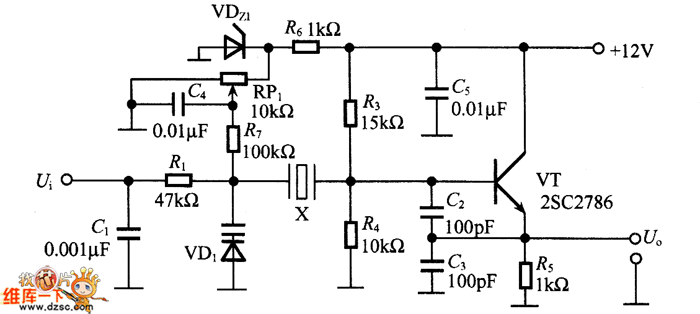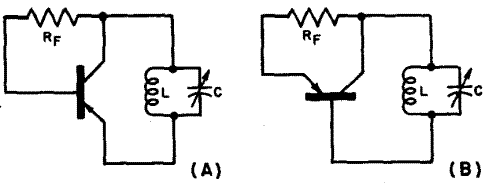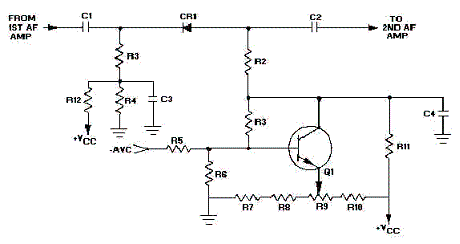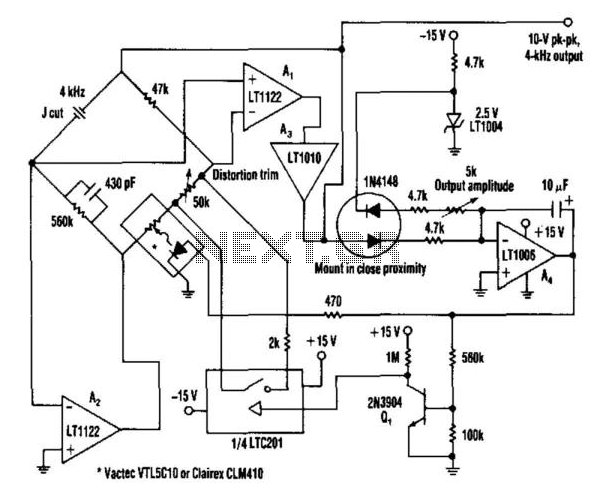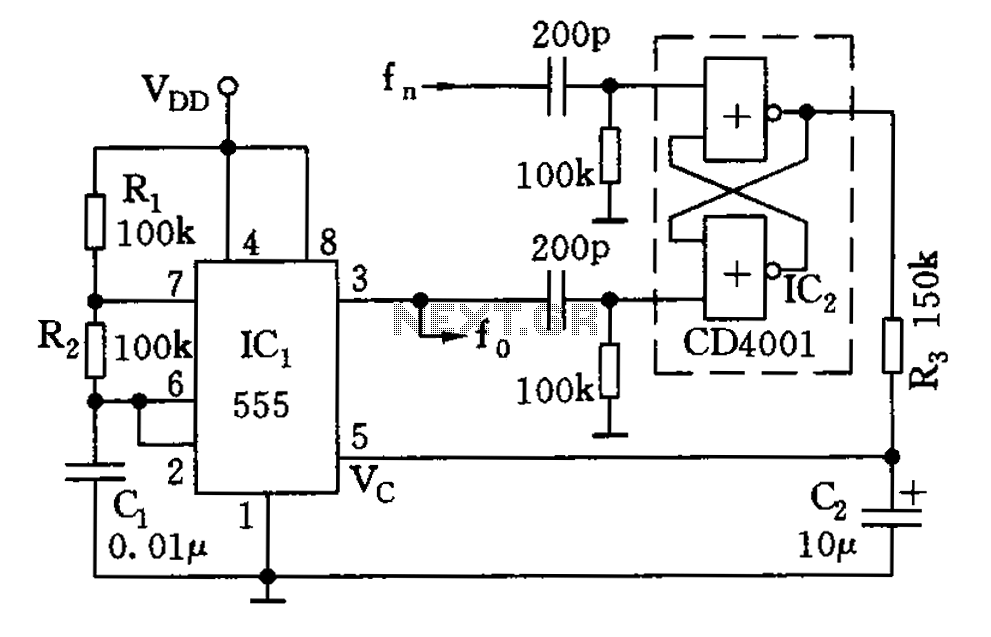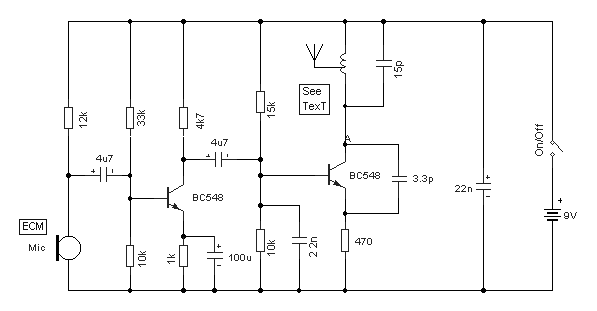
HARTLEY OSCILLATOR
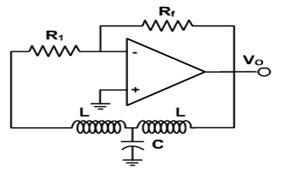
The Hartley oscillator is an LC electronic oscillator that derives its feedback from a tapped coil in parallel with a capacitor, forming the tank circuit. While mutual coupling between the two coil segments is not a requirement, the circuit is typically designed with this feature. A Hartley oscillator configuration consists of a pair of series-connected coils and a single capacitor. In this oscillator, the feedback voltage is generated by the inductive voltage divider formed by L1 and L2. The output voltage is measured across L1, while the feedback voltage is measured across L2, establishing the feedback fraction. The loading effect of the base is generally disregarded. For oscillations to initiate, the voltage gain must exceed 1/√2. The frequency of oscillation is determined by the circuit parameters.
The Hartley oscillator operates on the principles of resonance and feedback, utilizing an inductor-capacitor (LC) tank circuit to generate oscillations. In this configuration, the two inductors (L1 and L2) are connected in series, with a capacitor (C) connected in parallel to the tapped coil. The feedback mechanism is crucial for sustaining oscillations, as it allows a portion of the output voltage to be fed back into the circuit to maintain the oscillation process.
The tank circuit's resonant frequency is calculated using the formula:
\[ f = \frac{1}{2\pi\sqrt{L_{\text{total}}C}} \]
where \( L_{\text{total}} \) is the equivalent inductance of the series-connected coils. For a Hartley oscillator, this can be expressed as:
\[ L_{\text{total}} = L1 + L2 \]
This equation showcases how the inductance values directly influence the oscillation frequency. The feedback fraction is critical, as it determines whether the circuit will sustain oscillations. The condition for oscillation is that the loop gain must be equal to or greater than one, which is achieved when the feedback voltage is appropriately scaled.
In practical applications, the Hartley oscillator is favored for its simplicity and effectiveness in generating sine wave signals. It is commonly used in RF applications, signal generators, and other electronic devices requiring stable oscillation frequencies. The design can be adjusted by varying the values of L1, L2, and C to achieve the desired frequency response, making it a versatile choice in electronic circuit design.The Hartley oscillator is an LC electronic oscillator that derives its feedback from a tapped coil in parallel with a capacitor (the tank circuit). Although there is no requirement for there to be mutual coupling between the two coil segments, the circuit is usually implemented as such.
A Hartley oscillator is essentially any configuration that us es a pair of series-connected coils and a single capacitor. In the oscillator, the feedback voltage is developed by the inductive voltage divider, L1 & L2. Since the output voltage appears across L1 and the feedback voltage across L2, the feedback fraction is As usual, the loading effect of the base is ignored. For oscillations to start, the voltage gain must be greater than 1/ ². The frequency of oscillation is given by 🔗 External reference
The Hartley oscillator operates on the principles of resonance and feedback, utilizing an inductor-capacitor (LC) tank circuit to generate oscillations. In this configuration, the two inductors (L1 and L2) are connected in series, with a capacitor (C) connected in parallel to the tapped coil. The feedback mechanism is crucial for sustaining oscillations, as it allows a portion of the output voltage to be fed back into the circuit to maintain the oscillation process.
The tank circuit's resonant frequency is calculated using the formula:
\[ f = \frac{1}{2\pi\sqrt{L_{\text{total}}C}} \]
where \( L_{\text{total}} \) is the equivalent inductance of the series-connected coils. For a Hartley oscillator, this can be expressed as:
\[ L_{\text{total}} = L1 + L2 \]
This equation showcases how the inductance values directly influence the oscillation frequency. The feedback fraction is critical, as it determines whether the circuit will sustain oscillations. The condition for oscillation is that the loop gain must be equal to or greater than one, which is achieved when the feedback voltage is appropriately scaled.
In practical applications, the Hartley oscillator is favored for its simplicity and effectiveness in generating sine wave signals. It is commonly used in RF applications, signal generators, and other electronic devices requiring stable oscillation frequencies. The design can be adjusted by varying the values of L1, L2, and C to achieve the desired frequency response, making it a versatile choice in electronic circuit design.The Hartley oscillator is an LC electronic oscillator that derives its feedback from a tapped coil in parallel with a capacitor (the tank circuit). Although there is no requirement for there to be mutual coupling between the two coil segments, the circuit is usually implemented as such.
A Hartley oscillator is essentially any configuration that us es a pair of series-connected coils and a single capacitor. In the oscillator, the feedback voltage is developed by the inductive voltage divider, L1 & L2. Since the output voltage appears across L1 and the feedback voltage across L2, the feedback fraction is As usual, the loading effect of the base is ignored. For oscillations to start, the voltage gain must be greater than 1/ ². The frequency of oscillation is given by 🔗 External reference
